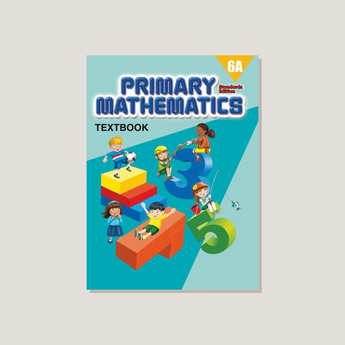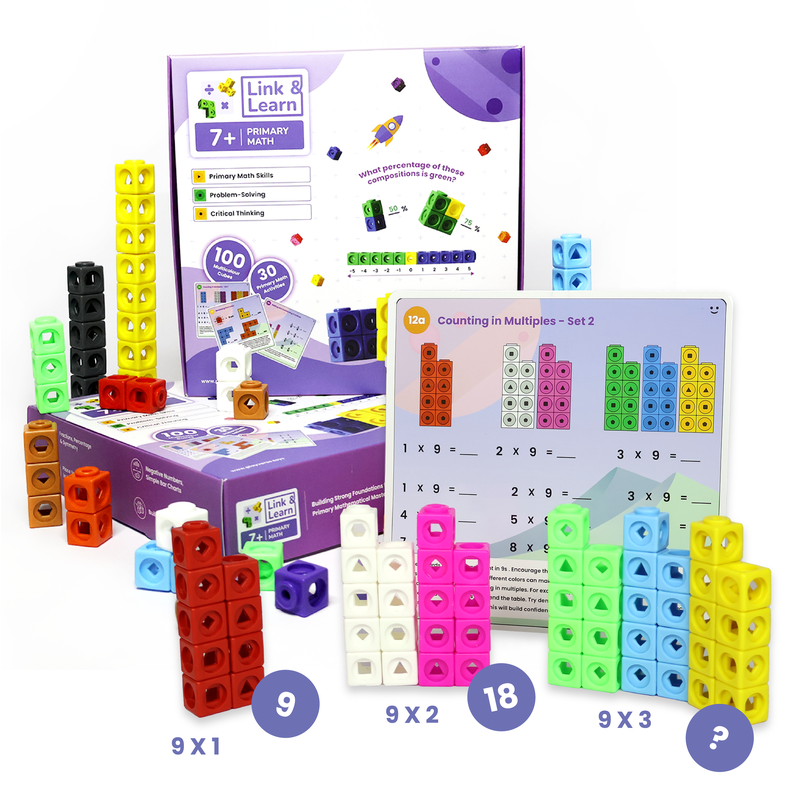Why early intervention matters when it comes to struggles in primary math
Wiki Article
Revealing the Best Shortcuts for Solving Mathematics Problems Promptly
In the domain name of maths, effectiveness is key. Grasping faster ways can transform the way people approach problems. From leveraging the distributive building to employing fast multiplication techniques, these methods boost both speed and precision. Additionally, recognizing patterns streamlines intricate computations. As one explores these methods, they may uncover unexpected understandings that can alter their mathematical experience. What are one of the most effective methods that can be quickly incorporated right into daily practice?Grasping Mental Mathematics Techniques
Exactly how can one boost their estimation rate without depending on calculators? Mastering psychological math techniques supplies a functional remedy. By employing techniques such as damaging numbers into smaller, workable parts, people can streamline intricate computations. For example, when including two-digit numbers, rounding each number to the nearest 10 can make psychological addition much easier prior to adjusting back to the original values.Another efficient technique is to exercise multiplication tables thoroughly, allowing fast recall of products (struggles in primary math). Furthermore, identifying patterns in numbers can promote faster calculations, such as utilizing the residential or commercial properties of also and weird numbers. Regular method with video games and problems can better improve these abilities, making mental mathematics a lot more instinctive
Eventually, growing confidence in one's arithmetic abilities enables quicker decision-making and enhances general mathematical proficiency. By integrating these methods, any person can significantly enhance their calculation speed.
Using the Distributive Property
The Distributive Residential or commercial property is a fundamental concept in maths that streamlines estimations by permitting reproduction across addition or reduction. It is essential for pupils to comprehend its application with practical instances, which can improve their analytical skills. In addition, acknowledging common mistakes can even more solidify their understanding and prevent mistakes in future computations.Understanding the Distributive Property
Understanding the distributive residential property can substantially streamline mathematical computations. This essential residential or commercial property states that when increasing a single term by a sum or distinction, one can distribute the multiplication throughout each term within the parentheses. As an example, in the expression a(b + c), one can rewrite it as ab + air conditioner. This method not just enhances calculations yet additionally improves understanding of just how numbers engage (struggles in primary math). The distributive home is particularly helpful in algebra, where it assists in simplifying expressions and fixing equations. In addition, it prepares for extra complex principles, such as factoring and polynomial procedures. By comprehending the distributive property, trainees can develop a solid structure for tackling a variety of mathematical challenges effectivelyPractical Instances Illustrated
Why is it vital to use the distributive property in functional circumstances? The distributive property allows individuals to simplify complicated estimations, making analytical a lot more reliable. For circumstances, when calculating the total cost of multiple products, one can utilize the expression 5(2 + 3) to locate the complete cost of five products valued at $2 and $3. By distributing, the calculation becomes 5 × 2 + 5 × 3, yielding a quicker result of $25. An additional instance remains in algebra, where streamlining expressions like 3(x + 4) can be accomplished with distribution, resulting in 3x + 12. Such applications illustrate the effectiveness of this home in various real-world situations, boosting both rate and precision in mathematical analytical.Common Mistakes to Stay Clear Of
The distributive residential property is an effective device in mathematics, common blunders can lead to inaccurate results. When students neglect to disperse the coefficient to each term within parentheses, one frequent mistake happens. In the expression 3(x + 4), stopping working to use the residential property correctly can lead to leaving out the multiplication, generating an incorrect solution. An additional error entails misapplying the property by adding as opposed to multiplying, specifically when negative indications are included. Additionally, trainees might neglect to streamline the last result, which can unknown mistakes made during distribution. Identifying and avoiding these mistakes can boost problem-solving effectiveness and precision when utilizing the distributive home in various mathematical contexts.Quick Multiplication Shortcuts
In the domain name of fast multiplication shortcuts, strategies like increasing by powers of 10 and the doubling and halving technique stand out. These methods can substantially simplify calculations, making them a lot more obtainable. Understanding these shortcuts can boost performance in mathematical problem-solving.Multiplying by Powers of 10
When multiplying by powers of 10, the process ends up being incredibly simple, as the procedure mostly involves shifting the decimal factor. As an example, increasing a number by 10 requires moving the decimal one location to the right, while increasing by 100 requires a change of 2 locations. This simplicity includes larger powers, where each additional zero indicates another decimal shift. As an example, increasing 5.6 by 1,000 cause 5,600. This approach greatly enhances rate and precision, as people can swiftly picture the result without complex computations. Such effectiveness is specifically useful in mental math or when time is restricted, enabling fast analytical in various mathematical contexts. Grasping this strategy is vital for anyone intending to boost their math skills.Doubling and Cutting In Half Technique
The Doubling and Cutting in half Technique offers an effective approach for quick reproduction, especially when handling even numbers. This method involves changing a multiplication problem right into a simpler kind by either doubling one of the numbers and cutting in half the other. To determine 16 × 25, one can cut in half 16 to get 8 and dual 25 to get 50, resulting in 8 × 50, which equates to 400 (struggles in primary math). This approach simplifies computations, making them much more convenient. It is especially valuable in mental mathematics, permitting people to resolve troubles swiftly and properly. By leveraging this approach, specialists and students can improve their mathematical agility, consequently improving general performance in mathematical tasks
Reliable Department Techniques
Department usually postures challenges for lots of students, utilizing efficient strategies can greatly streamline the process. One efficient method is making use of suitable numbers, which involves rounding More about the author the divisor and returns to much easier worths that are close to the initial numbers. This method makes mental estimations much more manageable. Another approach is the evaluation technique, where learners can discover a rough solution prior to performing the exact department, supplying a helpful criteria for precision.
The long department technique continues to be a staple for separating bigger numbers. By breaking the procedure into smaller sized, much more absorbable steps, students can preserve quality. The repeated subtraction technique can also be handy, especially for those that fight with more abstract ideas. By methodically deducting the divisor from the reward, individuals can imagine the procedure. In general, these approaches can improve department skills, causing quicker and a lot more accurate analytical abilities.
Quick Enhancement and Subtraction Techniques
Just how can learners enhance their rate and precision additionally and reduction? One effective method is to use psychological math methods, such as damaging numbers into smaller, a lot more manageable parts. As an example, when including 47 and 36, one can initially add 40 and 30 to get 70, then include the continuing to be 7 and 6 to reach 83. This strategy streamlines calculations and reduces errors.One more technique includes making use of the number line for aesthetic students, helping them to see the relationships between numbers and enhance their comprehension. Additionally, practicing with tools like flashcards can strengthen fast recall of fundamental amounts and distinctions.
Students can profit from familiarizing themselves with benchmark numbers, such as rounding to the nearby ten, which enables for quicker estimates. By incorporating these methods right into their technique, students can substantially boost their rate and precision in fundamental arithmetic operations.
Leveraging Evaluation for Quick Calculations
Evaluation offers as an effective device for enhancing estimation rate, matching psychological mathematics approaches efficiently. By rounding numbers to their nearby whole values, individuals can streamline intricate computations, making it easier to arrive at an approximate outcome promptly. When encountered with an issue like 198 + 267, rounding to 200 + 270 yields a fast quote of 470, allowing the solver to analyze the precision of the final solution.In addition, evaluation is particularly valuable in situations involving reproduction and division. By rounding variables to less complex numbers, one can rapidly gauge approximate products or ratios. This method not only conserves time yet also aids in determining potential mistakes in computations.
Recognizing Patterns and Formulas
Patterns and formulas are important tools in maths that allow individuals to solve issues much more effectively. Recognizing these patterns allows students to identify relationships between numbers and concepts, which can streamline intricate estimations. Acknowledging the quadratic formula (ax ^ 2 + bx + c = 0) promotes fast services to numerous equations.Patterns in sequences, such as arithmetic or geometric developments, aid individuals predict future terms without comprehensive computations. Solutions, on the various other hand, work as faster ways, permitting for faster analytic by encapsulating complex connections into workable expressions.
Often Asked Concerns
Exactly How Can I Enhance My Emphasis While Fixing Mathematics Issues Swiftly?
To boost emphasis while fixing mathematics issues swiftly, one can get rid of diversions, established particular goals, practice mindfulness techniques, take regular breaks, and keep a regular research regimen to improve concentration and mental quality.What Apps or devices Aid With Quick Mathematics Problem-Solving?
Different tools and apps, such as Photomath, Microsoft Mathematics Solver, and Desmos, improve quick mathematics analytic. These sources provide step-by-step remedies, graphing capacities, and immediate feedback, making them valuable for pupils and specialists alike.Exist Particular Mathematics Shortcuts for Standard Tests?
Yes, specific mathematics faster ways for standardized tests include strategies like evaluation, comprehending number buildings, making use of the process of removal, and grasping typical solutions. These methods enhance rate and accuracy, enhancing total test efficiency.
How Do I Practice Math Shortcuts Effectively?
To practice math faster ways effectively, people should on a regular basis solve diverse troubles, utilize online sources, and participate in timed drills. Consistency and reflection on errors improve understanding, ultimately resulting in enhanced rate and precision in calculations.Can Shortcuts Be Applied to Complicated Mathematics Troubles?
Faster ways can indeed be put on complex mathematics issues, although their performance varies. Mastery of foundational ideas and calculated reasoning makes it possible for people to streamline procedures, making it simpler to deal with complex estimations successfully.By using strategies such as breaking numbers into smaller, manageable parts, individuals can simplify complicated computations. Furthermore, acknowledging patterns in numbers can assist in quicker computations, such as utilizing the properties of even and strange numbers. Evaluation serves web as a powerful device for boosting estimation rate, matching mental math approaches efficiently. By rounding numbers to their nearby whole values, individuals can simplify intricate computations, making it simpler to arrive at an approximate outcome promptly. Recognizing these patterns permits students find more information to recognize relationships in between ideas and numbers, which can simplify intricate estimations.
Report this wiki page